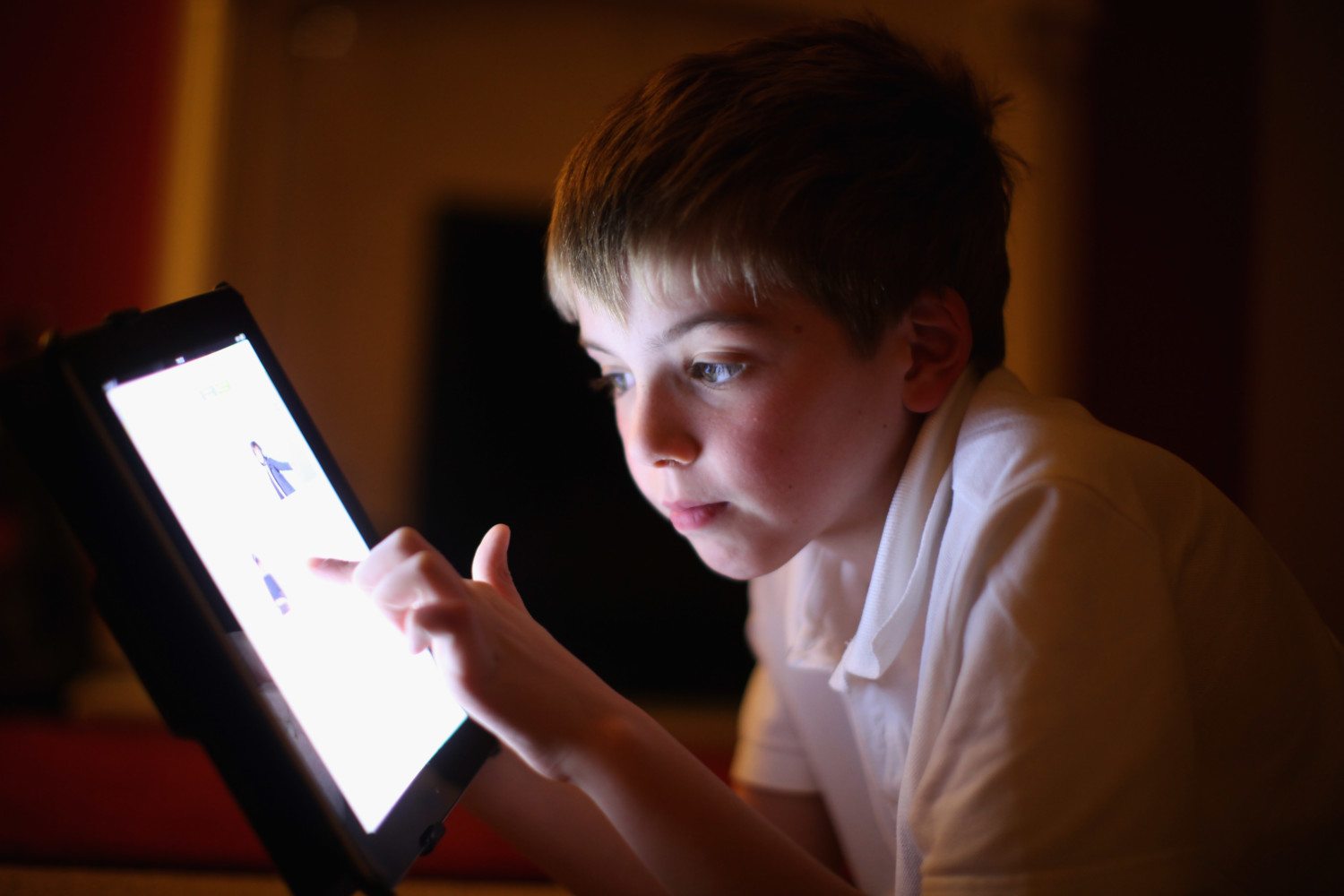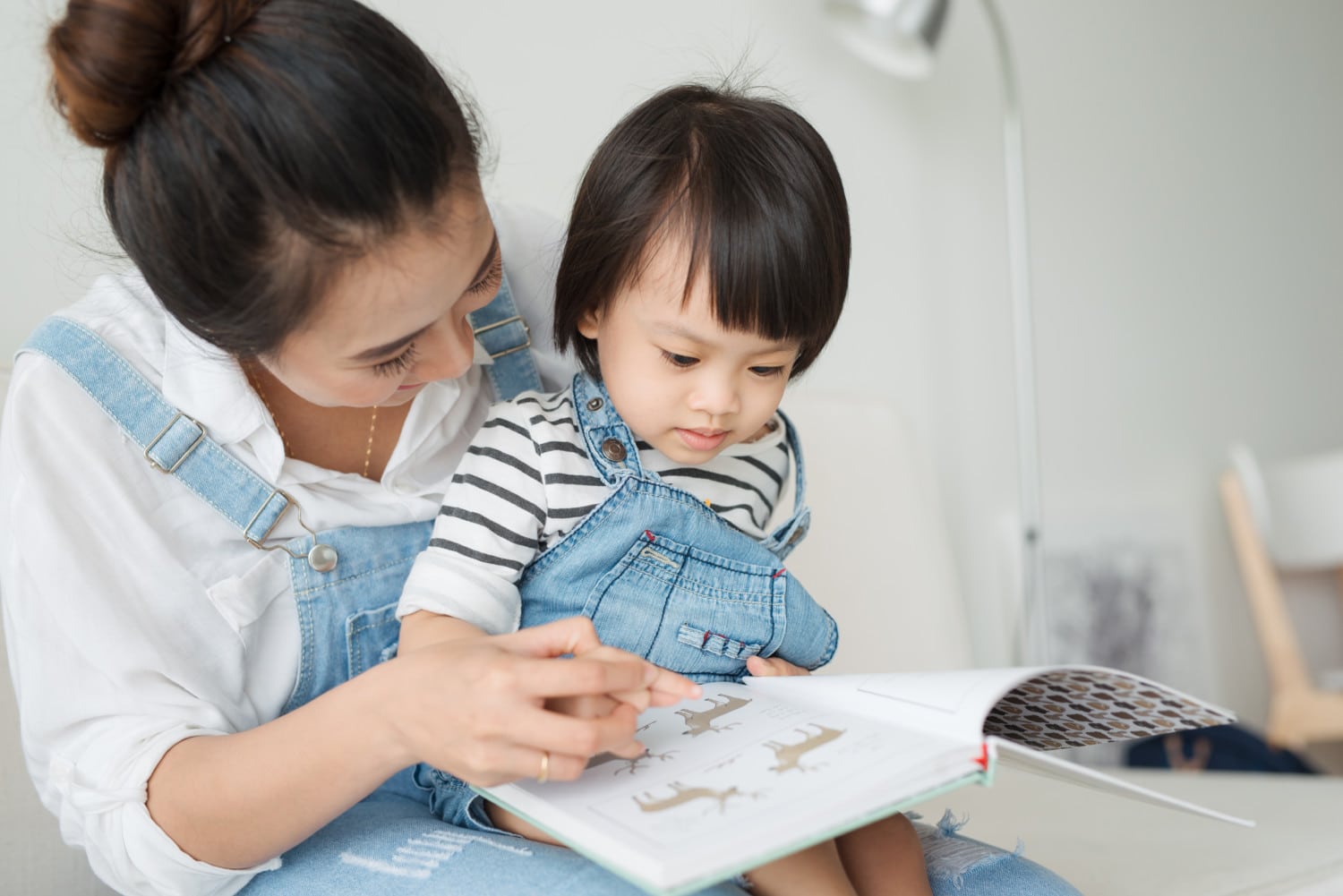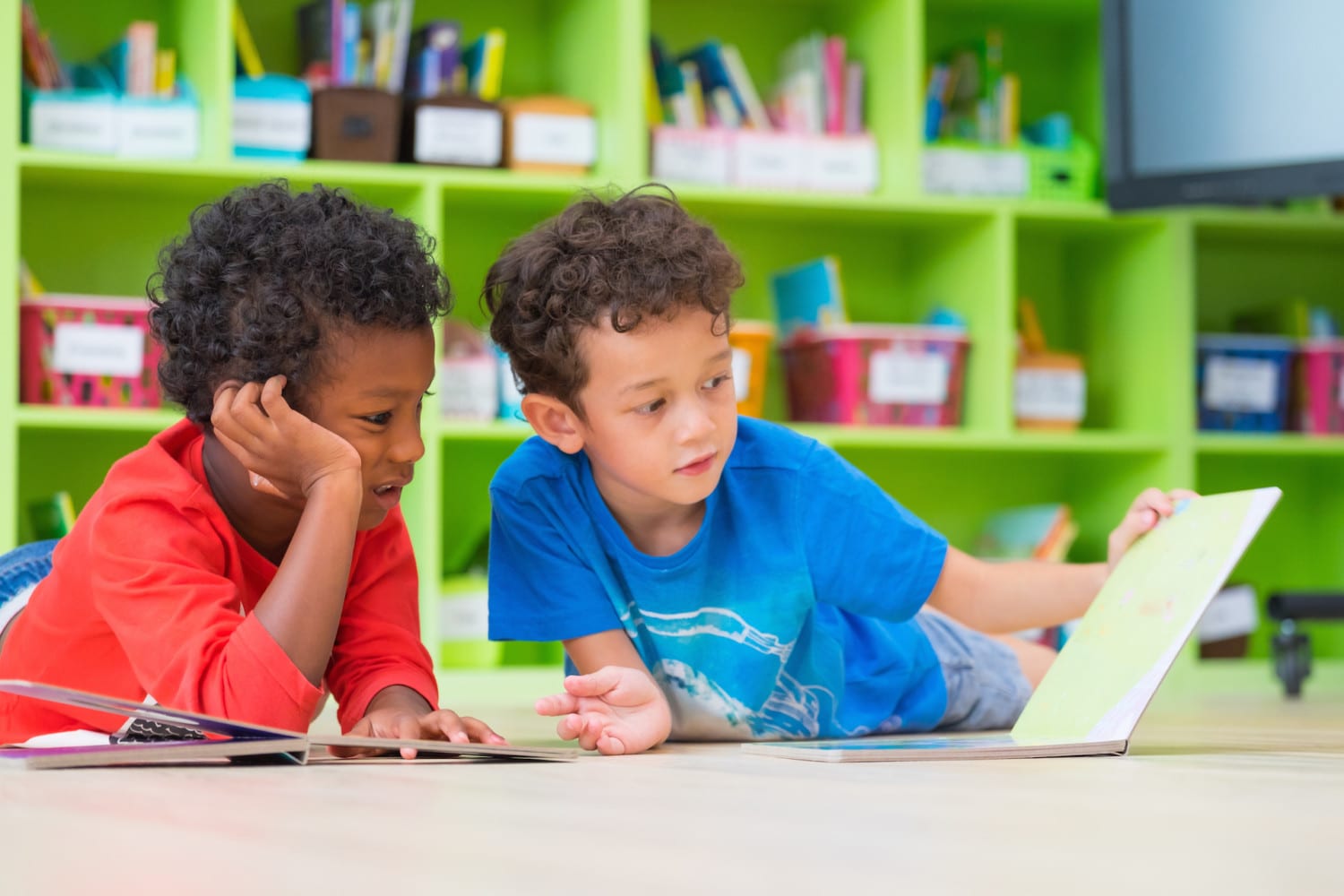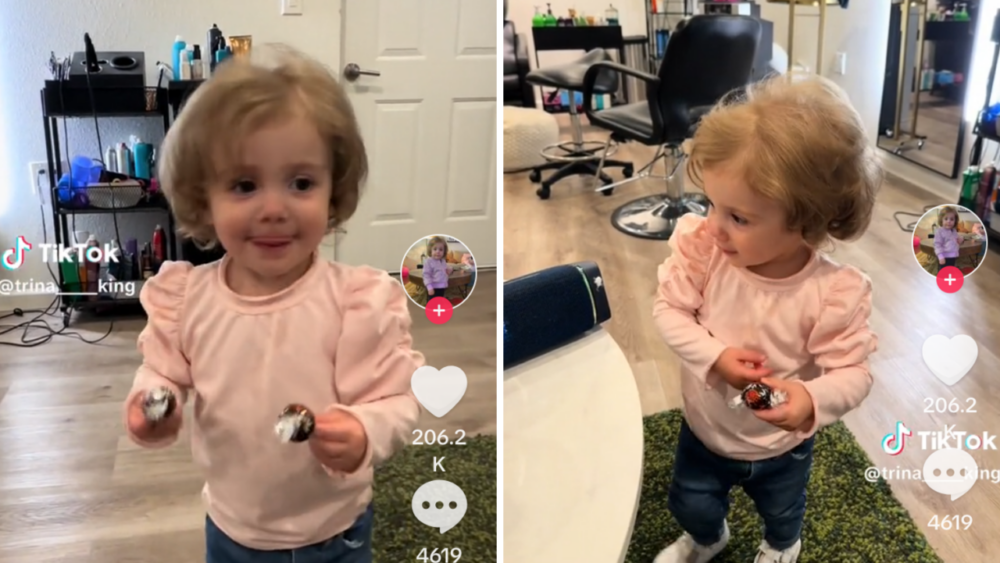New research says toddlers engage more with print books than tablets

Tablets and e-readers bring a whole library right to your fingertips. They simultaneously simplify life and shelves and also lighten your load. That’s wonderful for adult readers. However, new research may make you re-stock your shelves with print books again, at least for your little ones. For toddlers, reading on a tablet is a totally different experience than reading a physical book.
According to a new study published in the journal Pediatrics, toddlers interact more with their parents when reading print books vs. electronic versions. The words may technically be the same on the page and on the screen, but the connection and related community around the book is totally different.
“The print book is really the gold standard in eliciting positive interactions between parents and their children,” Dr. Tiffany Munzer, a fellow at the University of Michigan C.S. Mott Children’s Hospital and lead author of the study, told ABC News. “Our goal with some of the kinds of findings in the study is not to make things harder for parents, but to help them focus on activities that spark interactions with their children where they feel that back-and-forth is really easy.”
Lab Report
For the study, Munzer and her colleagues brought in 37 pairs of parents and their toddlers for observed reading sessions. The researchers videotaped the sets of parents and toddlers reading in a lab. Their reading material included titles from the Little Critter series in three different book formats, an enhanced electronic tablet, a basic electronic tablet and an illustrated print book.
They had only five minutes to read each story to help even out results and eliminate variables. The researchers then analyzed the session recordings. They looked at and counted the number and types of verbal and nonverbal interactions between parents and toddlers. These interactions included parents asking questions, pointing out observations on the pages and more.
Researchers recorded the most engagement and storytelling between parents and their toddlers when they read the print books. Surprisingly, parents were able to read through more of the print book than the tablet in the allotted five minutes. There were also more signs of bonding around the print books.
Digital Divide
There are a few factors that can explain these results. Toddlers, just like adults, can become easily distracted by the many options on an e-book or tablet. There are myriad buttons, sounds and automated additions. These, unfortunately, end up replacing the interaction between parents and toddlers. Instead of explaining the pictures on a page or diving deeper into the plot, parents let the electronic tablet take over.
It’s also important to note the small size of this research study. It offers interesting results. However, there’s much left to learn.
To Tablet Or Not To Tablet
Still, there’s no reason to throw out your tablets just yet. Tablet manufacturers are innovating to help enhance children’s learning and encourage human connection. There are some tablets made specifically for better interaction and development. For example, Microsoft incorporates digital inking into its Surface models. This may seem like a minor addition, but it can have a big impact. It helps young children progress from analog to digital tools more seamlessly. Children can draw or write in a more natural way on the tablets before moving on to typing.

According to an IDC study, 90% of teachers believe digital inking improves the quality of their curriculum. Other research shows that inking on devices has led to as much as a 38% improvement in performance from students.
Just Keep Reading
What may be more important than how your family reads is simply that you read at all. Scholastic’s Biennial Survey revealed a concerning readership drop-off among elementary-aged children. According to the survey, the percentage of frequent readers (kids who read books for fun 5 to 7 days a week) drops from 57% among 8-year-olds to 35% among 9-year-olds. There is also a sizable drop between 8- and 9-year-olds who say they love reading (from 40% to 28%).

As a family, you can improve your kids’ reading by sharing your own love of books. According to the Scholastic Biennial Survey, 82% of frequent readers say a lot or nearly everyone they know enjoys reading. In contrast, only 34% of infrequent readers can say the same.
Whether it’s an e-reader, a tablet or a print book, what’s really important is to keep reading together.






